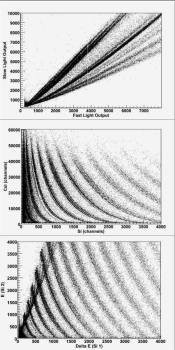NIMROD
NIMROD-ISiS
Assembling the cabling on NIMROD-ISiS
Data
 |
The three (currently) possible sources of information about charged particles in the NIMROD-ISiS array: CsI Fast-Slow, Si-CsI, Si-Si |
NIMROD
NIMROD-ISiS
Assembling the cabling on NIMROD-ISiS
Data
 |
The three (currently) possible sources of information about charged particles in the NIMROD-ISiS array: CsI Fast-Slow, Si-CsI, Si-Si |